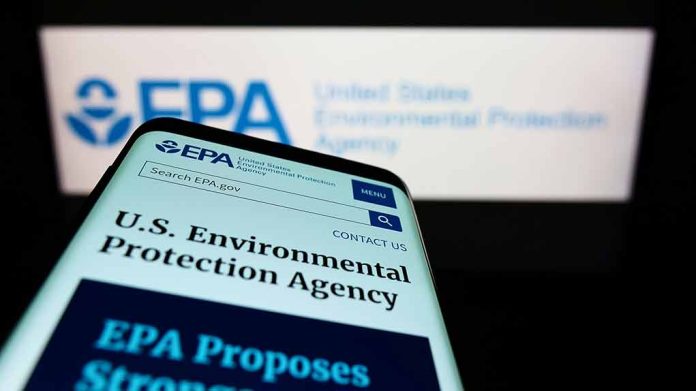
The EPA has committed $15 million to research the impact of PFAS on the food supply, leaving many wondering what we will uncover and how these findings might shape our future.
At a Glance
- The EPA announced $15 million in research grants to study PFAS exposure from food and protect farmlands.
- PFAS are persistent chemicals known as “forever chemicals” due to their long breakdown time.
- The research will investigate PFAS accumulation in crops and livestock.
- Twenty-five institutions will receive the research grants.
- The grant aims to protect farming communities and enhance food safety.
EPA Invests in PFAS Research
The U.S. Environmental Protection Agency (EPA) has awarded over $15 million in research grants to ten institutions to investigate PFAS exposure from food and safeguard farmlands and farming communities. This initiative aims to address the growing concern surrounding PFAS, persistent chemicals used since the 1940s that can accumulate in the environment and human body, posing potential health risks. The research will focus on how PFAS chemicals accumulate in crops and livestock and explore methods to mitigate this contamination.
PFAS, often referred to as “forever chemicals,” are known for their persistence and potential harmful impacts. The EPA’s funding will support studies on the impact of biosolids, compost, and irrigation water on PFAS uptake in plants and animals. The selected institutions include Michigan State University, Passamaquoddy Tribe, Temple University, Texas A&M University, Texas Tech University, University at Albany, University of Illinois, University of Maine, University of Utah, and University of Virginia.
“Farming communities are the lifeblood of this nation,” Christopher Frey, Assistant Administrator for EPA’s Office of Research and Development, stated. “The research supported by these grants will increase our knowledge of how PFAS is impacting our farmlands and food supply and help ensure our farming communities stay viable for years to come.”
Over $15 million in grant funding has been awarded to 10 institutions to research #PFAS exposure from food and protect our farmlands and farming communities. This research will help increase our knowledge of how PFAS is impacting farmlands and food supply. https://t.co/hOwJ9FiCtc
— U.S. EPA (@EPA) September 4, 2024
Addressing the Health Risks
High levels of certain PFAS can result in various health issues, including heightened cholesterol, liver enzyme changes, increased risk of high blood pressure or preeclampsia in pregnant women, decreased birth weight, increased risk of kidney or testicular cancer, and more. Nearly every U.S. state has drinking water containing PFAS levels exceeding the new EPA limits.
In April, the EPA introduced legally enforceable limits for certain PFAS compounds, compelling municipalities to review and potentially upgrade their water treatment systems. The new rule aims to protect approximately 100 million people from harmful PFAS exposure by implementing limits for five individual PFAS and mixtures of certain PFAS. Public water systems have three years to complete initial monitoring and five years to implement solutions if PFAS levels exceed standards.
New Standards and Future Goals
Technologies such as granular activated carbon, reverse osmosis, and ion exchange systems can help meet the new standards. The EPA will support water systems and local officials in implementing these measures and will hold webinars to provide further information. This initiative is part of President Biden’s broader efforts to ensure safe drinking water and advance environmental justice.
“Drinking water contaminated with PFAS has plagued communities across this country for too long,” said EPA Administrator Michael S. Regan in April.
The EPA’s efforts align with the Biden Cancer Moonshot goal to reduce cancer death rates and prevent cancer by reducing exposure to toxic substances. The agency is investing $1 billion through the Bipartisan Infrastructure Law to help states and territories implement PFAS testing and treatment, with a total investment of $9 billion for tackling PFAS and other contaminants and an additional $12 billion for drinking water improvements. Most remaining PFAS exposures will come from imported materials, so international cooperation will be essential in the fight against these persistent chemicals.
Sources
- EPA Awards $15 Million for Research on PFAS Exposure and Reduction in Agriculture
- Biden-Harris Administration Finalizes First-Ever National Drinking Water Standard to Protect 100M People from PFAS Pollution
- EPA Pledges $15M to Study ‘Significant Threat’ to U.S. Food Supply














